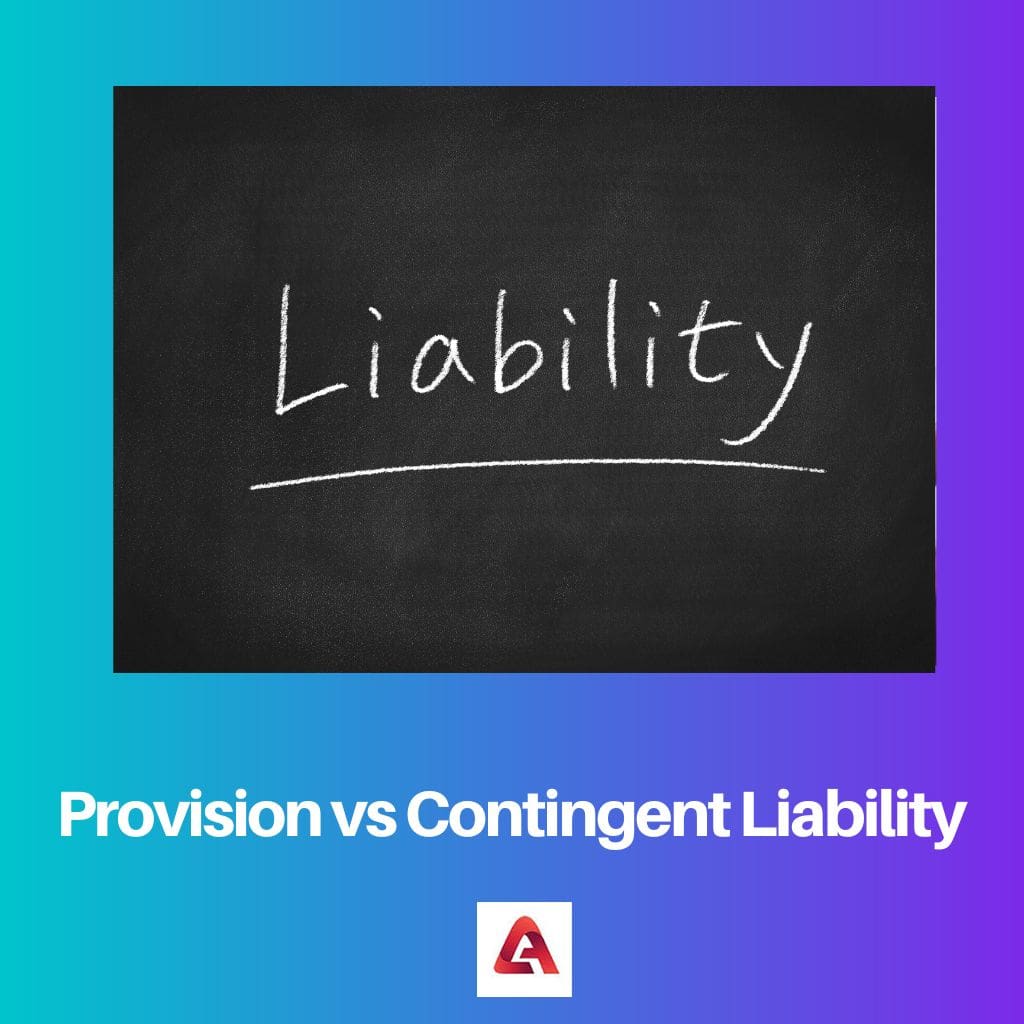Key Takeaways
- Provisions are recognized as liabilities on a company’s balance sheet, representing an estimated future expense or obligation.
- Contingent liabilities are potential liabilities that may arise depending on the outcome of a future event or uncertainty.
- Provisions are created and recorded when a company has a present obligation. At the same time, contingent liabilities are disclosed in financial statements but only recorded on the balance sheet if the likelihood of occurrence is high.

What is Provision Liability?
A provision signifies a decrease in the worth of an asset. It occurs only due to one or more present obligations. It also gets reviewed, at the end of a financial year.
This review lets one know if any amount is due from the previous year. If there is any due amount, over-provision, or under-provision, it will get registered in the income statement.
We can use an example to make provision liability more transparent. The sort of debts that a company fails to recover due to the insolvent of the debtors falls under provision liability for bad debts.
Another example of provision liability is when the company fails to regain debts due to clashes and disputes. These are doubtful debts that count as provision liability.
As this sort of liability affects the worth of an asset, the financial report also includes a record that documents the increase and decrease of provision liabilities under the profit and loss account.
What is Contingent Liability?
Provision liability runs due to the past, but contingent liabilities are the concern of the future. Several occurrences and circumstances exceed the company’s control, and the result of these uncertainties is a contingent liability.
One can register contingent liability in the balance sheet under two specific conditions. First, the probability of contingent liability taking place is inevitable. The second is the organization can decide the scope of contingent liability.
Product warranties and pending investigations fall under this type of liability. A pending lawsuit is another notable example. It may cost the company to pay a certain amount of money in the future.
A few fixed future events will give rise to these liabilities. These same events might have been an occurrence or may appear in the future. In the financial records, you will not find these liabilities. However, they will exist as a footnote.
Difference Between Provision and Contingent Liability
- In the case of provision liability, the asset comes with an obligation that is the reason for a past event. At the same time, contingent liability arises from beyond-control events.
- The estimated amount of the provisional liability can not be counted and specified, but contingent liability comes with certainty in estimation.
- Any growth or decline in provision liability gets jotted down in the profit and loss account. However, this does not happen in the case of contingent liability.
- A doubtful debt is an example of provision liability, whereas warranties related to products can be categorized as a contingent liability.
- Provision liability does not come with the confirmation of resources outflow. In comparison, contingent liability has this possibility.
Comparison Between Provision and Contingent Liability
| Parameter of Comparison | Provision Liability | Contingent Liability |
|---|---|---|
| Explanation | Here, the asset comes with an obligation that is the reason for a past event. | This liability is potential. It may or may not occur in the future, rising from some out-of-control events. |
| Estimating the liability | The evaluated amount of the provisional liability is never specific. | The calculated amount of the contingent liability is mainly certain. |
| Profit and loss | Any growth or decline in provision liability gets jotted down in the profit and loss account. | A change of graph in contingent liability does not register in a profit and loss account. |
| Few instances, | A doubtful debt falls under the example of provision liability. | Warranties of products and pending investigations come under the model of contingent liability. |
| Possibility of outflow resources | No, it has no chance of outflowing resources. | It bears the potential to outflow resources. |
